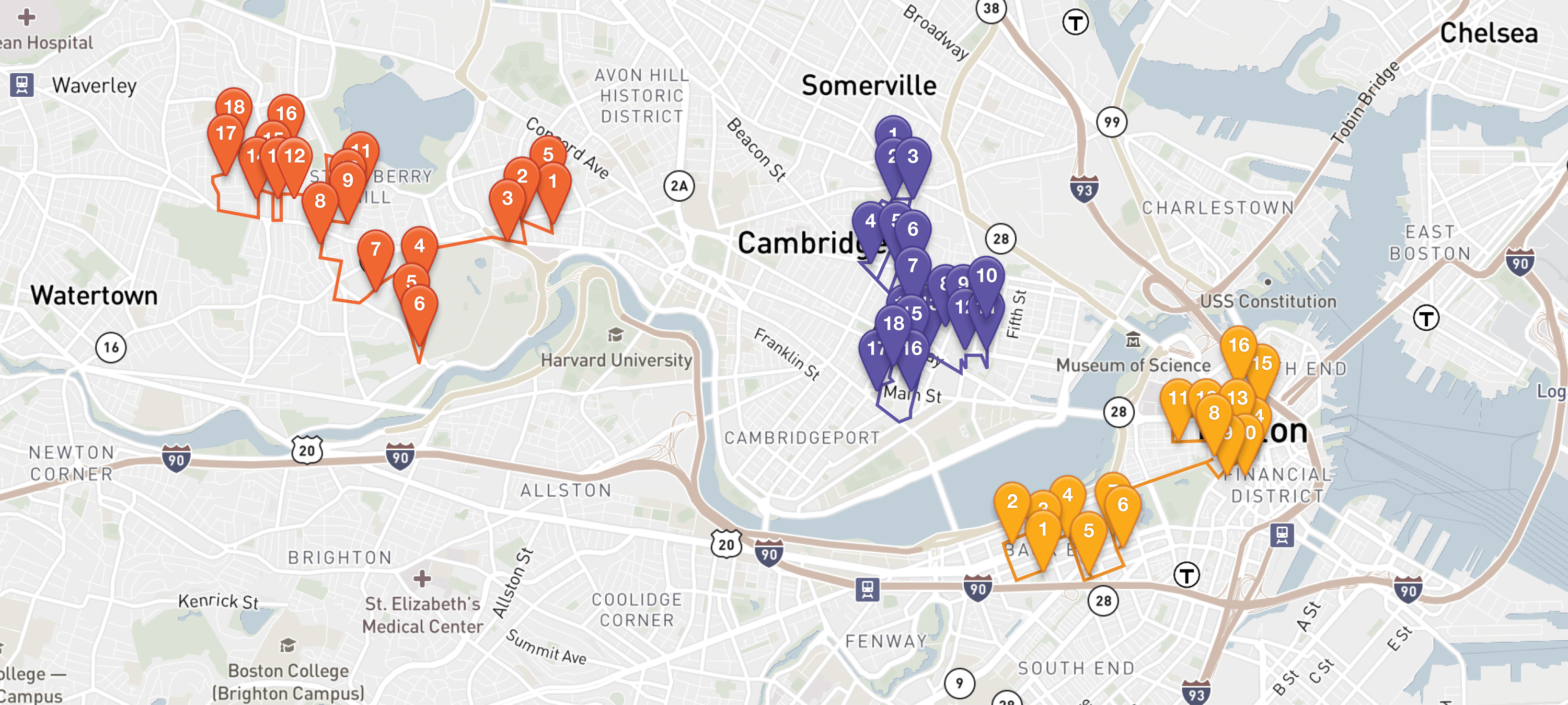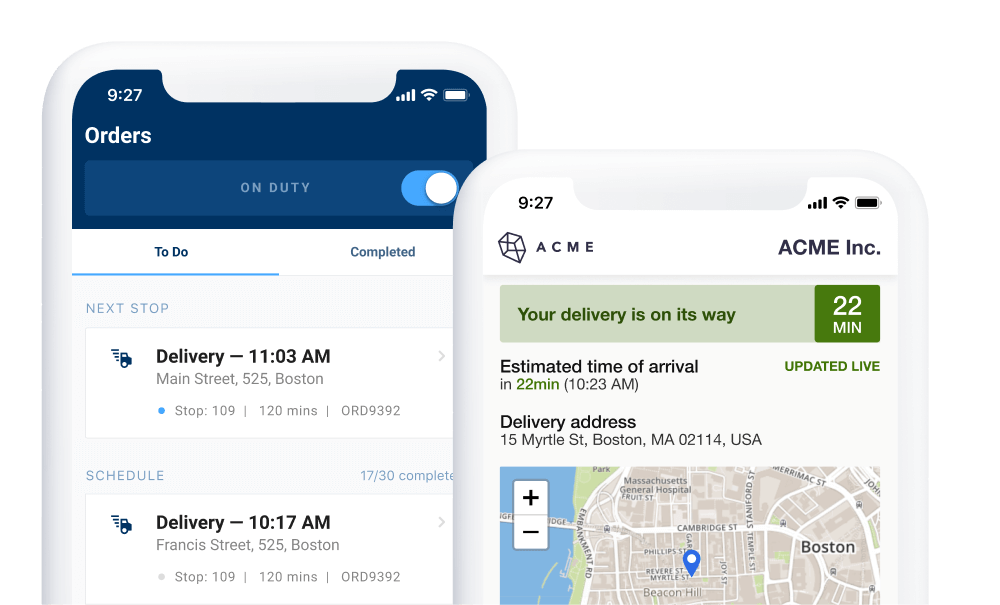How to Start a Catering Business and Achieve Long-Term Success

According to the U.S. Bureau of Labor Statistics, just over half of businesses (50.9%) survive their first five years. After 15 years, only about one in four (25.9%) remains. Starting a business is hard. Achieving long-term success is even harder.
So, what does it take to be an outlier? In the catering industry, it takes a love of cooking and a penchant for customer service, but it also takes business acumen. To get from day one to day 5,475, you’ll need a detailed business plan, the right technology, and a strategy for optimization.
Here’s how to start a catering business and grow for years to come:
- Make a Catering Business Plan
- 3 Software to Make Your Catering Business More Efficient
- Partner With Local Businesses
- Launch With a Soft Open
- Plan for Growth
Make a Catering Business Plan
Most successful endeavors start with a plan, and businesses are no different. You can always refine your plan as you go, but you need a roadmap to work off of. Here’s what you need to do:
Choose your specialty
The catering industry is competitive, so it isn’t enough to simply be a great caterer. You need to specialize. Choose a niche that will make your catering company stand out and appeal to a specific audience, preferably one that fills a gap in your local market.
Your niche could be a type of food, such as vegan or gluten-free, a style of catering, such as white-glove service, or you could focus on specific events, such as corporate. Once you build up a following within your specialty, it will be easier to branch out because you’ll already have an audience that trusts and loves you.
Want proof? Just look at Dollar Shave Club. They started out selling one “f**king great” product (razors) to a specific audience (men) in a very specific way (as a subscription). Now they sell a wide range of grooming products to both men and women, and the company was acquired for a cool billion dollars. Do one thing exceptionally well, win over your audience, and you’ll have serious staying power.
Organize your logistics
Catering is a field service business, so logistics plays into every aspect of your work, from the tools you need to use to the way you have to approach food safety. Organize your logistics early, and everything else will be easier to plan.
Determine where you will be cooking. Are you going to use your home kitchen for food preparation, rent commercial kitchen space, or do you have a restaurant to work out of?
Determine how you’ll transport food. Will you use your personal vehicle, buy a delivery van, or rent a truck?
Map out your territory. Just like choosing your specialty, it’s better to start small. You can always expand.
Figure out where you’ll source ingredients from. Are you going to shop at the local grocery store? Partner with local farms? Are you going to cook everything yourself, or do you plan to partner with local eateries for certain dishes, such as desserts?
These are all questions you need to answer in your business plan to help determine the scope and depth of your business as a whole.
Create an equipment shopping list

Take stock of the supplies you have and create a list of items you need to acquire. Here are a few items you’ll likely need:
- Thermal bags and/or insulated food containers
- Large-scale cooking equipment
- Chafing dishes
- Tablecloths
- Sterno cans
- Food-handling gloves
- Branded uniforms and/or aprons
If you’re not sure what serveware you need right off the bat, you can rent catering equipment to start. Many party and event rental companies offer an assortment of catering essentials, so you can try out different dishes and see what you like.
Lay out your finances
Start a running tally of startup costs as well as predicted ongoing expenses (such as insurance coverage) and earnings. Use these numbers to calculate:
- How much you need to charge customers
- What it will take for your business to break even
- What your projected revenue will be during your first three years
Start a cash flow forecast that lays out when each expense needs to be paid. Investors will ask for these estimates to determine how risky your business proposition is. You also need these numbers to determine how many employees you can afford to hire and whether those employees should be part-time or full-time. Don’t forget to factor in liability insurance, a business license, and permits when you add up expenses.
Create a marketing strategy
You don’t have to start with a huge marketing budget (although it certainly helps), but you do need a plan to get the word out about your business.
Think about your specialty, and tailor your marketing strategy to your target audience. If you want to cater weddings, for example, you could join authoritative websites such as The Knot or WeddingWire that feature vendors for brides and grooms.
Use social media to your advantage. Set your company up with a website, app, and social pages. Share these with your friends, family, and biggest supporters early. Cultivate a fan base (and client base) before you launch by sharing your story. Post enticing photos of food from your menu, share what inspired your business, and be sure to highlight your niche.
3 Software to Make Your Catering Business More Efficient
Efficiency is essential for your business at every stage, but it’s particularly important when you’re just starting out. The more efficient you are, the more productive you are, and the faster your small business becomes profitable.
One effective way to increase your efficiency is to outfit your business with advanced technology. Software makes everything more efficient, from communicating with potential customers to routing your catering trucks. Here are three software to add to your tech stack:
OptimoRoute
Mapping apps like Google Maps aren’t enough when you need to drive to multiple locations. Don’t waste time entering addresses manually for every destination. With route optimization software such as OptimoRoute, you can easily route your team (and your temperature-sensitive food) to hundreds of customers in the most efficient way possible.

OptimoRoute helps you:
- Send drivers on the most efficient routes every time.
- Reduce overall route planning and scheduling time.
- Plan up to five weeks at a time.
- Assign deliveries based on individual vehicle capacity.
- Set constraints, including arrival windows, personnel requirements, or specific vehicles (such as a refrigerated truck).
- Monitor your team in the field with live tracking.
- Set customer notifications to automatically go out when you’re on your way.
- Share live tracking with clients, so they can see when you will arrive in real time.
OptimoRoute simplifies field service logistics by calculating the most efficient routes based on your unique constraints in just seconds. It’s enabled companies like Oco Meals to plan deliveries in one-tenth of the time compared to planning without software. If you want to maximize efficiency and create a scalable business, route optimization software is a must-have.

Reduce your operational costs by 30%
Increase delivery capacity by 43%
Plan 7x faster
Caterease
Managing customers and paperwork gets confusing quickly when you’re dealing with dozens of events at different addresses with different food requests. Simplify the event planning part of your job with catering services software like Caterease.
Caterease helps you do all of the following easier and faster:
- Create menus for corporate events, cocktail parties, and more using a drag-and-drop interface.
- Keep track of new leads and customer management.
- Print stylized event sheets for clients and your staff.
- Verify schedules to avoid conflicts.
- Assign food service staff to particular events.
- Create packing lists.
Learn more about Caterease.
Buffer
To build a brand, you need to cultivate a following. But social media marketing and engagement take a lot of time if you don’t have the tools to simplify the process. Streamline social media marketing with software like Buffer.
Buffer enables you to:
- Design posts for multiple platforms from one dashboard.
- Plan ahead and schedule posts to be published later.
- Track post performance to learn what works and what doesn’t.
- Learn more about your audience.
Try Buffer for free for 14 days.
Partner With Local Businesses
Catering clients often request more than just food. You may get clients who ask if you can bring everything, from centerpieces to tables and chairs. You could lean into this and offer event planning services in addition to catering. The key is to anticipate your clients’ requests and be prepared with solutions. The worst thing you can do is simply say, “no.” Anticipate client requests and use them as an opportunity to build trust, become an advisor, and help your clients find solutions.
If you don’t want to be a one-stop-shop for pop-up events, form alliances with local businesses that offer services your potential clients are likely to ask for. Team up with event planners, furniture rental companies, and florists. This way, if a client asks about these things, you can refer them to someone you trust.
You could also sit down with business owners you want to team up with and create a pricing sheet that combines both of your services. Pre-priced service sheets make selling easier for you and purchasing easier for customers.
Launch With a Soft Open
Once you’ve got all of your supplies, teams, and strategies in place, it’s time to open your business to customers. Celebrate with a soft launch, and you’ll get three major benefits:
- Practice. As the old saying goes—practice makes perfect. Use a soft launch to work out any kinks in your workflow. Give your team the opportunity to practice and improve in a controlled environment. You’ll all be better prepared to crush your first high-stakes job.
- Valuable feedback. Not only will you learn by going through the steps of cooking, transporting your food, and serving customers, but you can also request feedback from your clients during a soft open. Use your launch to ask guests questions or even provide a short survey they can fill out with anonymous feedback.
- Buzz. Run your soft open like an invitation-only press event and generate word-of-mouth marketing. Round up your family, friends, and some of your most engaged social media followers and host a soft launch party. Encourage your guests to share photos, post a review on Yelp, and generate buzz for your business.
You should also celebrate the opening of your business simply for the sake of celebrating. You will face a lot of challenges as a business owner, and it’s important to savor your accomplishments along the way. Taking your business from plan to launch is a huge feat, so enjoy it!
Plan for Growth
In an interview with Mashable, Elon Musk shared insights into his business success saying, “I do try to optimize the productivity of every activity… I think that’s the single best piece of advice: constantly think about how you could be doing things better and questioning yourself.”
As a co-founder of PayPal, the CEO of Tesla Motors, and CEO of SpaceX (among a myriad of other accomplishments), Musk is certainly an authority on growing a successful business. Here’s how to apply his sage advice to your own business:
Analyze and adjust
We talked about the importance of outfitting your team with advanced software. But there’s more to the technology we mentioned than just streamlining operations. Each software—OptimoRoute, Caterease, and Buffer— provides analytics. And you can use these insights to figure out how to do things better.
Use Buffer analytics to tailor your marketing strategy and learn which photos, content, and copy resonate with your target audience.
Caterease offers customizable metrics, so you can choose which customer information you track. You can also use Caterease to forecast revenue.
OptimoRoute analytics shows you how well your team is executing deliveries—whether your team is arriving at events on time, if drivers are following the planned routes, and more.
Analytics is the key that unlocks your path to continued improvement—and growth.
A great example of this comes from one of our clients, Tomato Mountain Farm. After analyzing their OptimoRoute analytics, Tomato Mountain realized their delivery system needed to be improved. They reorganized their delivery territory into zones that each receive deliveries one day of the week. They used their analytics data to make smart changes and grow their subscribership from 300 to 1,200 members.
Use capacity planning to scale
Just like you need a business plan to start a business, acquire funding, and successfully launch, you also need a plan to grow your business. But that type of planning is different. To scale and expand an existing business, you need capacity plans.
Capacity planning helps you understand how much time and resources each task or operation within your business uses. Once you know that, you can figure out how much more time and resources are required to expand. Say you want to increase your maximum catering capacity from 200 patrons to 250. You’ll have to determine whether your delivery vehicles can handle 25% more cargo. If not, you’ll need to send two vehicles to events with over 200 people.
These calculations give you a solid formula for scaling your business. Capacity plans also help you determine how much you need to charge as you expand your offerings.
OptimoRoute Is Here to Support Your Growth
At OptimoRoute, we know owning a business is hard work, which is why we are constantly refining our software and adding new features based on customer feedback. We’re here to support your growth. Have a question about our software or need guidance integrating OptimoRoute with another app in your tech stack? Just send us a message or give us a call. Our customer support team will be happy to help.
Try OptimoRoute™ for Free
No installation or credit card required


